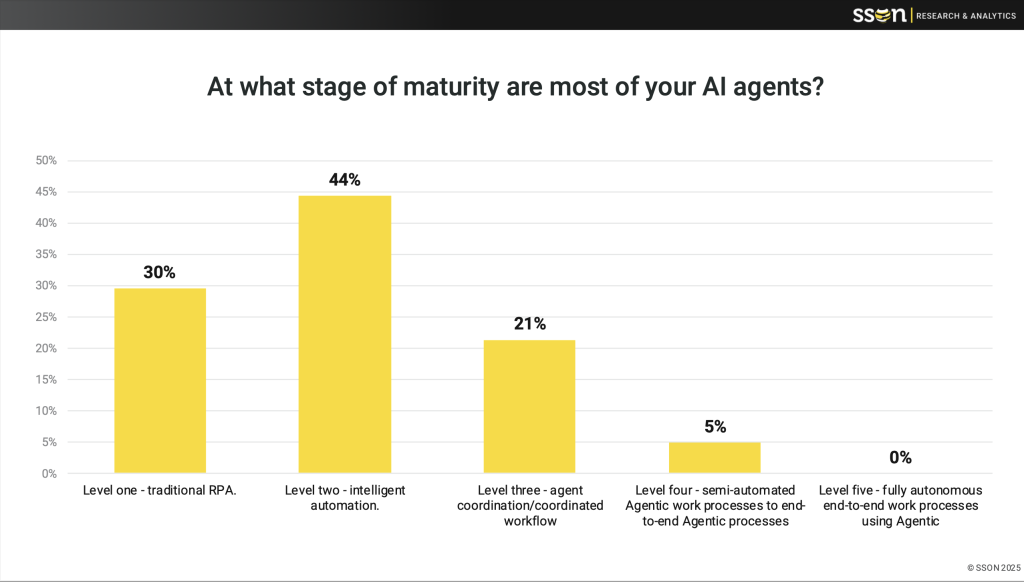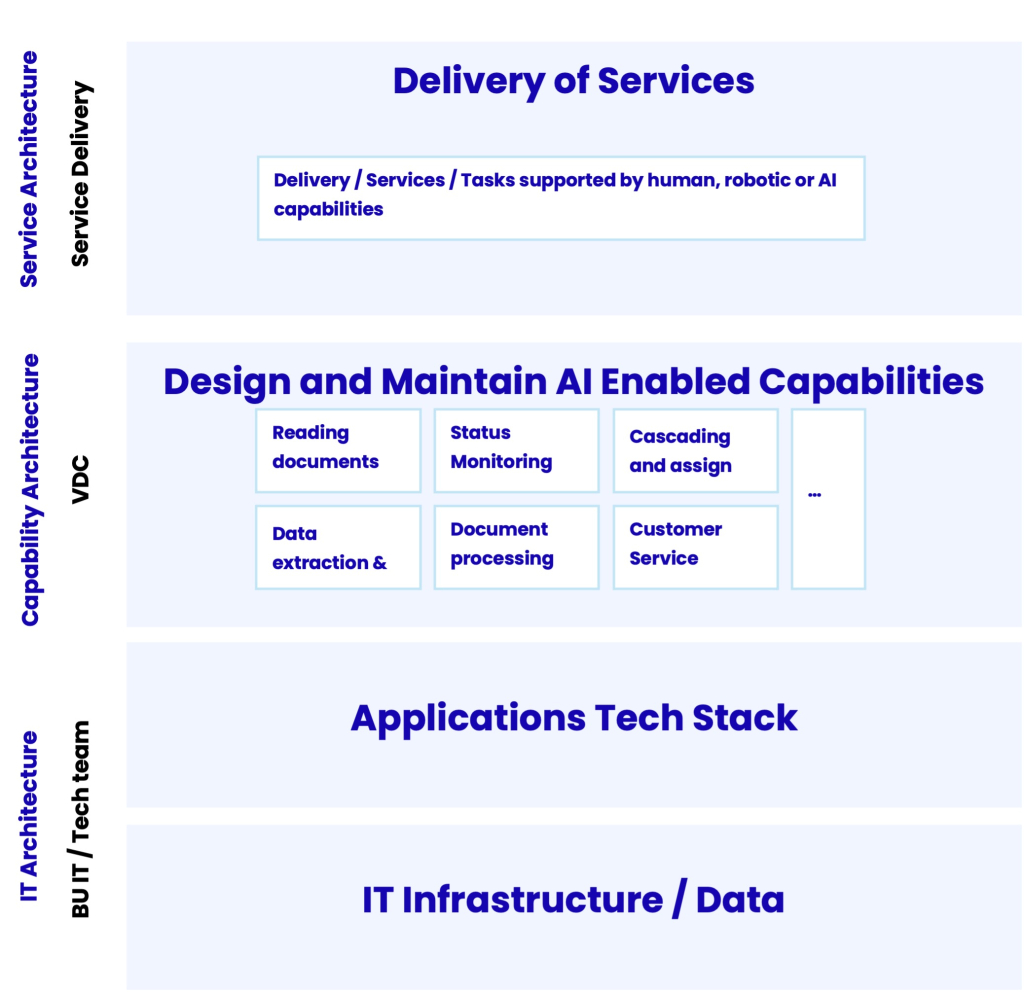Unleashing the AI-Powered Shared Services Centers: Navigating the Future of Work

Posted by Frank Schüler on October 20, 2025
by Dr. Frank Schüler - Managing Director Global Service Center (GSC) at DHL Global Forwarding, Freight; and Dr. Adam Bujak – Chief Executive Officer, KYP.ai GmbH
In today’s rapidly shifting business landscape, enterprises across every sector are grappling with a challenging economic environment. Mounting cost pressures and relentless demands for revenue growth are forcing organizations to rethink traditional operating models and pursue new efficiencies at scale. At the same time, the rise of AI agents and digital augmentation promises to revolutionize how work gets done, offering the potential for unprecedented productivity gains. Yet, the path forward is far from straightforward. According to SSON Research & Analytics, 51% of SSOs are currently either evaluating or at the pilot stage for evolving AI capabilities (e.g., agentic), and roughly 3/4 of AI Agents currently deployed are only at the basic level 1 and 2 stages – i.e., RPA or intelligent automation.1 In addition, Gartner reports that as many as 40% of AI agent initiatives are expected to fail, highlighting the complexity and risk that comes with adopting these transformative technologies.2

The ambition of this article is to investigate: How can enterprises successfully navigate this landscape to drive productivity and build a digitally augmented workforce that truly delivers?
The Vision: A Future of AI-Boosted Productivity
Imagine a Shared Services Center of the future, where:
- Productivity is transparent and measurable, not just by process and executed transaction levels, but by individual and team contributions across every system thanks to fully integrated platforms.
- AI agents handle routine and complex tasks autonomously, freeing human talent for innovation, problem-solving, and relationship-building.
- Operations run 24/7, scaling effortlessly to meet demand spikes without burnout or bottlenecks.
- Continuous improvement is the norm, as AI agents surface insights, flag inefficiencies, and suggest optimizations in real time.
Analysts predict that by 2028, agentic AI will autonomously handle up to 15% of daily business decisions, transforming shared services into engines of agility, resilience, and growth.3 For employees, this means less time spent on drudgery and more opportunities to learn, create, and lead.
The SSC Reality
Picture this: a talented team in a bustling Shared Services Center, juggling hundreds of requests, navigating dozens of systems, and striving to deliver excellence – yet still feeling the pressure to do more, faster, and better. Despite investments in workflow tools and process automation, many organizations hit a familiar wall: a lack of true transparency into productivity, fragmented data across platforms, and the constant struggle to balance efficiency with quality. For leaders and teams alike, the question is urgent: how to break this cycle and unlock the next level of performance?
Combination of workflow and people
The future of productivity in Shared Services Centers lies in the intelligent integration of digital tools, AI agents, and human expertise. By leveraging workflow and process intelligence platforms like ServiceNow and KYP.ai, SSCs can achieve unprecedented transparency and control over both process and employee productivity. AI agents, when thoughtfully implemented, offer immense opportunities to automate routine work, drive efficiency, and unlock new value streams – provided organizations proactively manage the associated risks and workforce transitions.
READ ALSO:
Research Insight Report: Agentic AI in GBS – Unlocking the Next Wave of Transformation
A structured, hybrid approach – combining data integration, automation, continuous learning, and flexible work models – will empower SSCs to deliver superior service quality, optimize costs, and sustain competitive advantage in the digital age. The challenge is not whether to embrace AI and digital augmentation, but how to do so in a way that maximizes opportunity, mitigates risk, and keeps people at the center of the transformation journey.
Taming the SSC AI Agents – A Practical Approach
A layered architectural approach ensures that AI-driven innovations are systematically onboarded, tested, and scaled across the enterprise. Our model enables seamless collaboration between IT and business units, fosters continuous improvement, and accelerates the adoption of AI and intelligent automation.
IT Architecture Layer
At the foundation, the IT Architecture Layer is responsible for onboarding AI agent technologies. These technologies are managed by business application owners and must be seamlessly incorporated into the broader IT infrastructure and data landscape. This layer ensures:
- Integration of AI agents into core business applications, enabling automation and intelligence across platforms.
- Robust IT infrastructure that supports scalable deployment, management, and monitoring of AI solutions.
- Centralized data management, ensuring AI agents have access to high-quality, secure, and compliant data sources.
- Collaboration between IT and business teams to align AI agent capabilities with organizational objectives.
Capability Architecture Layer (Virtual Delivery Center - VDC)
The Capability Architecture Layer operates as part of the Virtual Delivery Center (VDC) of the Shared Services Operator. Here, AI agents are rigorously tested to build AI-enabled capabilities that can completely or partially replace human efforts. This layer focuses on:
- Developing, validating and maintaining AI-driven processes such as reading documents, extracting and entering data, monitoring status, processing documents, and handling customer service.
- Testing and refining AI agents to ensure reliability, accuracy, and compliance before deployment into production environments.
- Orchestrating human-AI collaboration, where AI augments or automates repetitive and rule-based tasks, freeing employees to focus on higher-value work.
- Continuous improvement, leveraging feedback and operational data to enhance AI capabilities over time.
- Protect, maintain and enhance the knowledge base of all the AI empowered tools being used in daily service delivery.
It is the responsibility of the Shared Services Organization to build an inventory of reusable deterministic (i.e. RPA) and non-deterministic (i.e. AI, GenAI) process automation capabilities, truly scalable across various processes and scenarios (i.e. indirect functions, operational processes and customer).
Service Architecture Layer
At the top, the Service Architecture Layer owned by the Shared Services Organization integrates the AI-enabled and VDC-tested capabilities into the actual delivery of services. These capabilities become a critical part of the service delivery organization, ensuring:
- Seamless delivery of services supported by a blend of human, robotic, and AI capabilities.
- Auditing and managing consistent service quality and reliability of all services provided by the blend of human, robotic, and AI capabilities.
- Operational efficiency and scalability, as AI agents automate routine tasks and support complex service delivery.
- Enhanced customer experience, with faster response times, improved accuracy, and 24/7 availability. Business agility, enabling organizations to rapidly adapt service delivery models as new AI capabilities are developed and validated.
By structuring the journey from IT infrastructure through capability development to service delivery, organizations can maximize the value of AI while maintaining operational resilience and agility (see below).

A layered architectural approach to AI Agents
Additional considerations
Shared Services Centers must foster a culture of continuous learning and engagement. As roles evolve, leaders should invest in upskilling and reskilling employees to work alongside AI agents, emphasizing analytical, strategic, and interpersonal skills.4 Engage employees in designing and optimizing new processes, which enhances their sense of purpose and drives higher productivity.5
Implement Robust Performance Management and Feedback Loops. Set clear objectives, KPIs, and feedback mechanisms to align individual and team performance with organizational goals. Use data-driven insights to continuously recognize and reward high performers, identify areas for improvement, and drive accountability.
Conclusions
The integration of AI agents within Shared Services Centers (SSCs) presents a transformative opportunity to enhance productivity, streamline operations, and empower human talent. By adopting a layered architectural approach – spanning IT infrastructure, capability development, and service delivery – organizations can systematically deploy AI solutions that complement human expertise in Service Delivery. At the same time, enterprises must continue fostering a culture of continuous learning, investing in upskilling employees, and implementing robust performance management systems for the hybrid workforce. By doing so, SSCs can navigate the complexities of digital transformation, ensuring that AI augmentation leads to sustainable growth and a resilient, scalable and future-ready workforce.
Sources
1. Agentic AI in GBS: From Promise to Performance; SSON Research & Analytics Webinar
2. Gartner Predicts Over 40% of Agentic AI Projects Will Be Canceled by End of 2027
3. Say ‘hi’ to your new virtual team members: AI agents
4. 5 Characteristics of the Best Shared Services Centers
5. Shared Services And The Meaning of Work
See how leading SSCs are measuring and improving productivity in real time - Book a demo with our data experts today.

